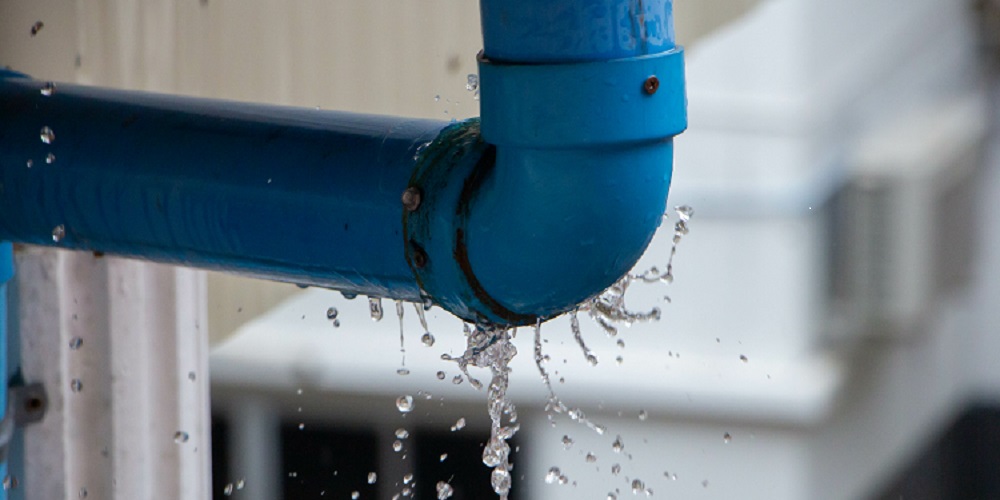This great article following next pertaining to Detecting hidden plumbing leaks is indeed entertaining. You should investigate for yourself.

The minute you discover a leakage, calling your plumber for repair services is the most effective service. However, some tiny water leakages might not be visible. Below are some hacks that aid if you can not spot it with your nude eyes.
Early detection of dripping water lines can alleviate a possible disaster. In addition to saving you cash, it will reduce the irritation and disappointment.
Check Water Usage
If you find abrupt modifications, in spite of your usage being the exact same, it means that you have leaks in your plumbing system. An abrupt spike in your bill shows a fast-moving leakage.
A stable boost every month, even with the same practices, reveals you have a slow leakage that's additionally gradually rising. Call a plumber to thoroughly check your residential or commercial property, particularly if you really feel a cozy area on your flooring with piping beneath.
Examine the circumstance and also inspect
Home owners should make it a practice to check under the sink counters as well as even inside cupboards for any kind of bad odor or mold and mildew growth. These 2 red flags indicate a leakage so punctual interest is needed. Doing regular assessments, also bi-annually, can save you from a major problem.
Take A Look At the Water Meter
Every house has a water meter. Inspecting it is a proven way that helps you find leakages. For starters, shut off all the water sources. Guarantee no person will purge, use the tap, shower, run the washing maker or dishwasher. From there, go to the meter as well as watch if it will certainly alter. Because no one is using it, there ought to be no motions. That shows a fast-moving leakage if it relocates. If you identify no changes, wait a hr or 2 and inspect back again. This suggests you may have a slow-moving leakage that might also be below ground.
Asses Exterior Lines
Do not fail to remember to examine your exterior water lines as well. Test spigots by attaching a yard hose. Should water permeate out of the connection, you have a loosened rubber gasket. Change this as well as make sure all connections are limited. If you've got a lawn sprinkler, it will certainly help get it expertly took a look at as well as maintained each year. One tiny leakage can lose lots of water and surge your water expense.
Do a Food Coloring Test
30% comes from commodes when it comes to water intake. Examination to see if they are running correctly. Decrease specks of food shade in the storage tank and also wait 10 minutes. There's a leakage in between the container as well as bowl if the color somehow infiltrates your dish throughout that time without flushing.
Inspect for stainings and also weakening as most devices and pipelines have a life expectancy. If you suspect dripping water lines in your plumbing system, don't wait for it to intensify.
The minute you find a leak, calling your plumber for fixings is the ideal option. Some little water leakages might not be noticeable. Checking it is a proven way that aids you uncover leaks. One little leakage can waste tons of water and also increase your water bill.
If you suspect dripping water lines in your plumbing system, do not wait for it to rise.
How to Know If Your Home Has a Hidden Leak
Water Meter Reveals Inexplicable Water Usage
If you’d like to test whether or not there’s a leak somewhere in your home, you can do this using your water meter. Here is how to conduct the test:
Don’t use any water in your home for at least 30 minutes; this also means not turning on faucets or water-using appliances.
Go outside, and check your water meter for activity.
If your water meter shows that there was activity, even though no one was using any water, this proves that there is a leak in your home.
Visible Mold or Mildew Growth
Leaks behind walls create moist, dark environments that allow mold and mildew to grow and thrive. Eventually, you might see mold growth forming on the wall closest to a hidden leak.
If mold is growing in an area that receives a high amount of moisture, such as a bathroom, it may simply be an indication that better ventilation is needed. However, if you see mold growth on a wall or the ceiling in an area where you would not expect, you probably have a hidden leak.
Musty, Mildew Odor
Sometimes you might not be able to see the mold or mildew that is growing as a result of a leak. However, the smell can give the problem away just as easily. If you catch a whiff of something musty, there’s a good chance that old water is collecting somewhere in your home that you can’t see.
Stained/Warped Walls, Ceilings, or Floors
When your home soaks up water, a variety of red flags can become visible, including ceiling stains, bubbling drywall, warped walls, and sagging floors. While these issues can be caused by excess humidity, they can also be signs that a pipe or plumbing connection has started leaking behind your walls.
Inexplicably High Water Bill
After a while, you get a general sense for what your water bill should be. If you own a pool or sprinkler system, your bill will tend to be higher during summer. However, if you receive a water bill that seems especially high, and you can’t figure out what caused it, then you may have a hidden leak somewhere that’s increasing your bill.
https://www.plumbingjoint.com/blog/2019/july/how-to-know-if-your-home-has-a-hidden-leak/

I found that piece about Detecting hidden plumbing leaks when doing a lookup on the web. Sharing is caring. Helping people is fun. We enjoy reading our article about Hacks to detect leaks.
Comments on “Guide To Water Leakage Discovery At Home”